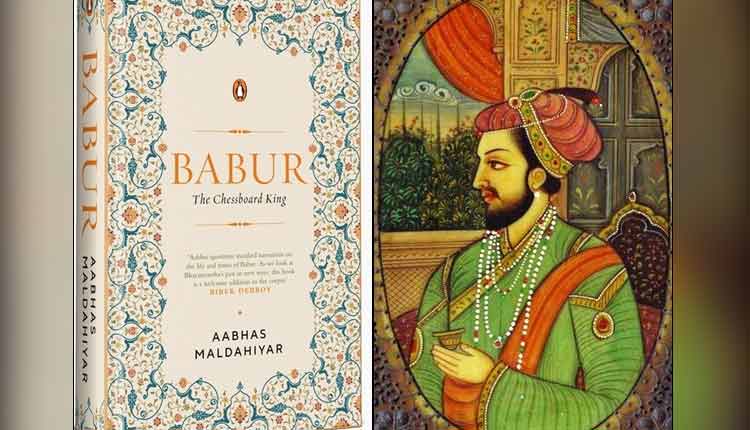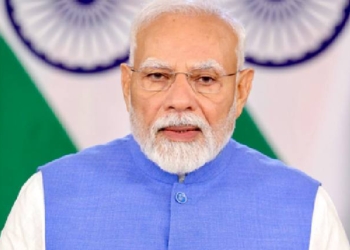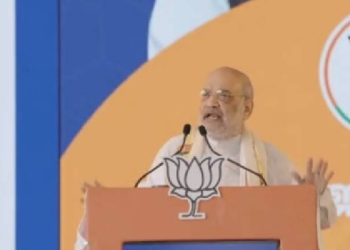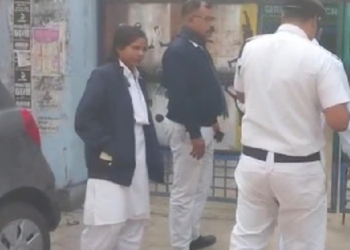New Delhi: Shah Jahan, son of Jahangir, was way ahead of his father in terms of barbarity. It was merely in the first decade (sixth year) of his reign that he passed a farman to raze mandirs whose foundations had been laid during his father’s period and stood unfinished. He was high with the zeal to revive Islam in the best possible way. He intended to reflect Islam as a dominant religion, and hence apart from demolishing mandirs, he commissioned many grand mosques like the Jama Masjid in Delhi.
Well, even the Taj has enough baggage of a gory past. …
It is recorded that when the Taj Mahal was built in 1631, it cost around 41.8 million silver rupees. To set things in perspective, I am providing some mathematics for the readers. On average, the mean income of a farmer’s family was one ‘dam’ (copper coin) per day. One silver rupee was equivalent to forty ‘dams’, and a single rupee would get you around 280 kilograms of general-grade rice during Shah Jahan’s reign. Now, the question arises as to why this analysis was important and how it brought more shocks in my NCERT history-educated life.
This was the time when the great Deccan Famine (1630–31) had occurred, and around 7.4 million had succumbed to the same. It may sound strange, but this famine was created by Shah Jahan himself. In 1631, the army of Shah Jahan marched to the Malwa as one of his commanders stationed there had rebelled and joined hands with the Adilshahis of Bijapur and Nizamshahis of Hyderabad. The army intended to teach the rebel commander a lesson. The records state that Tīmurids (distorted as Moghuls) extracted an annual revenue of not less than around ten million rupees from the Malwa province in the seventeenth century.
The fertile belt of Malwa was a hen with the golden egg for the Tīmūrids. The rebellion had eclipsed this massive income and the attack on Malwa as well as the Deccan had become inevitable. Two years before it, commander Khwaja Abu Hasan had invaded Malwa. These acts briefly led to the massive famine of 1630–32.
The destruction of crops in Malwa and Deccan by Shah Jahan’s royal armies has been well recorded by court chroniclers and foreign travellers. For example, Inayat Khan, in ‘Shah Jahanama’, talks about how Shah Jahan had ordered the imperial army to “ravage the country from end to end”.
The order of Shah Jahan was carried very comprehensively, and Inayat writes, “There is scarcely a vestige of cultivation left in this country.” Like his ancestors, Shah Jahan did not leave his wives behind during the wars. And it was during his campaign against Burhanpur that Mumtaz Mahal died from a post-partum haemorrhage while struggling to give birth to their fourteenth child. She suffered around thirty hours of labour. And it was here that he decided to dedicate the tomb to her corpse which is known to the world as the Taj Mahal.
Shah Jahan’s campaigns were of course set to lead to results. The scarcity of rain, coupled with devastations brought by the Imperial Tīmūrid Army, added to the great famine of 1630-32. The regions affected were Gujarat, Malwa and Deccan.
Just to set the destruction in perspective, we read about the Bengal famine of 1943, which led to the death of three million people, and for which Winston Churchill continues to be held accountable. Yet, the Deccan famine of 1630-32, which killed more than twice the number of people who died in the Bengal famine, gets whitewashed with ease. And of course, even if we hear a few murmurs about the famine, no one asks, “Why did Shah Jahan kill so many?”
I was shaken after reading the agony of people and surprisingly court chronicler Abdul Hamid Lahori did not roll a carpet over it: “Inhabitants were reduced to the direst extremity. Life was offered for a loaf, but none would buy. Dog’s flesh was sold for goat flesh. The pounded bones of the dead were mixed in flour and sold. Men began to devour each other, and the flesh of a son was preferred to his love. The number of deaths caused obstruction on the roads. Those lands which had been famous for fertility and plenty of resources retain no traces of production.”
Peter Mundy, the seventeenth-century British traveller and merchant who visited the region during the famine, wrote in his diary:
“Surat (Gujarat): Great famine, highways unpassable, infested by thieves looking not for gold but grain; Kirka: Town empty. Half inhabitants fled. Another half dead; Dhaita: Children sold for 6 dams or given for free to any who could take them so they might be kept alive.
“Nandurbar (Maharashtra): No space to pitch a tent, dead bodies everywhere. Noisome smell from a neighboring pit where 40 dead bodies were thrown. Survivors searching for grains in the excrement of men and animals. Highway stowed with dead bodies from Surat to Burhanpur.”
Mundy provides details of how the Tīmurid lords were treating people.
He wrote: “In Bazaars lay people dead and others breathing their last with the food almost near their mouths, yet dying for want of it, they not having wherewith to buy, nor the others so much pity to spare them any without money. There being no course taken in this Country to remedy this great evil, the rich and strong engrossing and taking perforce all to themselves.”
There was no food for the general public while it was abundant for the Royal Tīmurids. When the entire province was on its deathbed, Shah Jahan’s war camp was in fair shape. It was spacious and plentifully stored with all provisions. The camp was receiving supplies from all the corners, far and near.
Not only did Shah Jahan ensure that people felt the wrath of the famine but the great Tīmūrid prince also collected a tax to build the tomb for Mumtaz. The Timurid Empire, established by Babur, was known for collecting the highest taxes in the world. The estimates tell us that they used to take a share of more than half of what the peasants produced.
In contrast, Hindu kings like those of the Vijayanagar Empire, charged one-sixth of the produce. This was almost four times less than the Tīmurids.
I even came across details of Shah Jahan’s revenue utilisation. He invested a little more than one-third of the revenue in the sixty-eight princes and amirs. One-fourth of the revenue went to his 587 officers. This implies that almost 62 per cent of the revenue was spent on merely 665 members of the ruling elite.
After having read around the subject, it did not take me much time to conclude that Shah Jahan brought the famine over to Gujarat, Malwa and the Deccan by ravaging the crops completely. And then, the diversion of the revenue to build the Taj Mahal coupled with the scarcity of rain caused the famine in which around eight million people died. This number is well attested in a letter written by a Dutch East India Company lawyer.
I was startled. If Churchill can be held responsible for ‘genocide’ in Bengal, then Shah Jahan should also be held responsible for the genocide of around eight million people. The building that everyone has described as the pride of Bharat was built at the cost of the blood of so many.
(The author is an architect and historian. This extract has been taken from his introduction to his book, ‘Babur: The Chessboard King’, from Vintage, an imprint of Penguin Random House, with the permission of the publisher.)
(IANS)















